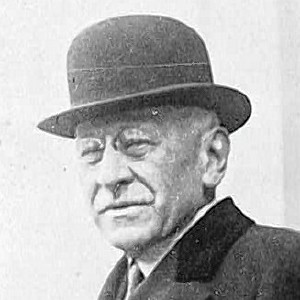Guest columnist Amanda Alix: Spare forests when siting solar
| Published: 08-21-2023 11:10 AM |
Dan Winslow’s melodramatic guest column for the Amherst Bulletin and Daily Hampshire Gazette casts Shutesbury as the villain and W.D. Cowls Inc., and Amp (now PureSky) Energy as the victims vis-a-vis the lawsuit filed by Cowls and Amp claiming the town’s solar bylaw is too restrictive [“Wrongly blocking solar in Shutesbury”].
What is happening is that a small rural town is being forced to defend itself against the state’s largest landowner and a huge private equity-backed solar company.
Unlike Cowls and PureSky, the town of Shutesbury is far from wealthy. Though the town would gain increased tax revenue from the proposal, the business arrangement between Cowls and PureSky would be much more lucrative. Cowls will retain ownership of the nearly 190 acres under consideration, collect lease payments from the solar developer, and profit from the sale of the trees removed from the subject properties.
PureSky will reap solar incentives from the state, paid for with our tax dollars, and receive payments for the energy it creates and sells to the electric utility.
While profit isn’t necessarily a bad thing, neither are small-town communities’ attempts to preserve their rural character. Forests play a role in climate change amelioration too, sequestering carbon, cooling the environment, and serving as filters for air and water. Though it is true that, acre for acre, solar arrays offset more carbon emissions than trees can sequester, it is only because the energy produced by the arrays is factored into the equation.
Leaving the trees alone and placing the arrays on surfaces that do not need clearing would result in even more decarbonization.
Trees also prevent erosion and provide habitat for wildlife. The 190-acre land clearing would likely cause soil erosion and runoff that would impact nearby homes as wetter weather becomes more common in the Northeast. Loss of habitat also will drive wildlife closer to people’s properties, increasing conflict.
Of course, it is easier to clear large tracts of forested land for solar farms than to use already built areas such as buildings for solar panels and parking lots for canopy solar, but that fact doesn’t make it the right thing to do. Why can’t there be more of a mix, including making it less arduous for homeowners to solarize their properties, to meet the state’s decarbonization goals? As the Solar Futures Study notes, ground solar needn’t be dependent on pristine forested land only.
Article continues after...
Yesterday's Most Read Articles
 ‘Home away from home’: North Amherst Library officially dedicated, as anonymous donor of $1.7M revealed
‘Home away from home’: North Amherst Library officially dedicated, as anonymous donor of $1.7M revealed
 Super defers Amherst middle school principal pick to successor; one finalist says decision is retaliation for lawsuit
Super defers Amherst middle school principal pick to successor; one finalist says decision is retaliation for lawsuit
 Granby Bow and Gun Club says stray bullets that hit homes in Belchertown did not come from its range
Granby Bow and Gun Club says stray bullets that hit homes in Belchertown did not come from its range
 Connecticut man gets 8 years in Hadley shooting
Connecticut man gets 8 years in Hadley shooting
 Design Review Board in Amherst backs 5-story apartment project connected to old Hastings building
Design Review Board in Amherst backs 5-story apartment project connected to old Hastings building
 Political newcomer defeats Shores Ness for Deerfield Selectboard seat
Political newcomer defeats Shores Ness for Deerfield Selectboard seat
As Winslow notes, the Technical Potential of Solar Study found that Massachusetts has 15-18 times more solar potential to support decarbonization by 2050 than needed. In addition, the study states that the MA Clean Energy and Climate Plan for 2050 “calls on the Commonwealth to develop solar siting policies in a manner that is consistent with the protection of critical habitats, as well as to develop regulatory pathways to limit forest clearing.”
We can meet our collective clean energy goals without sacrificing the rural environment we hold dear. I truly believe that working with, not against, each other will get us there well before the 2050 deadline.
Amanda Alix lives in Shutesbury.

 Guest columnist Rudy Perkins: Dangerous resolution pins ‘aggression’ on Iran
Guest columnist Rudy Perkins: Dangerous resolution pins ‘aggression’ on Iran Richard S. Bogartz: What the ghosts of Warsaw Ghetto know
Richard S. Bogartz: What the ghosts of Warsaw Ghetto know Guest columnist Dr. David Gottsegen: Age issue not so key as question of marbles
Guest columnist Dr. David Gottsegen: Age issue not so key as question of marbles Guest columnist Martha Hanner: Spirit of philanthropy can uplift so many others
Guest columnist Martha Hanner: Spirit of philanthropy can uplift so many others